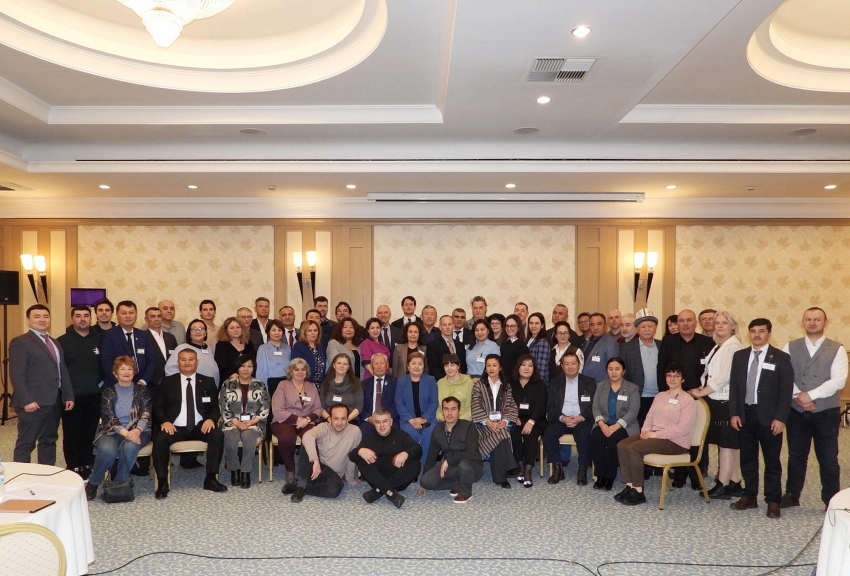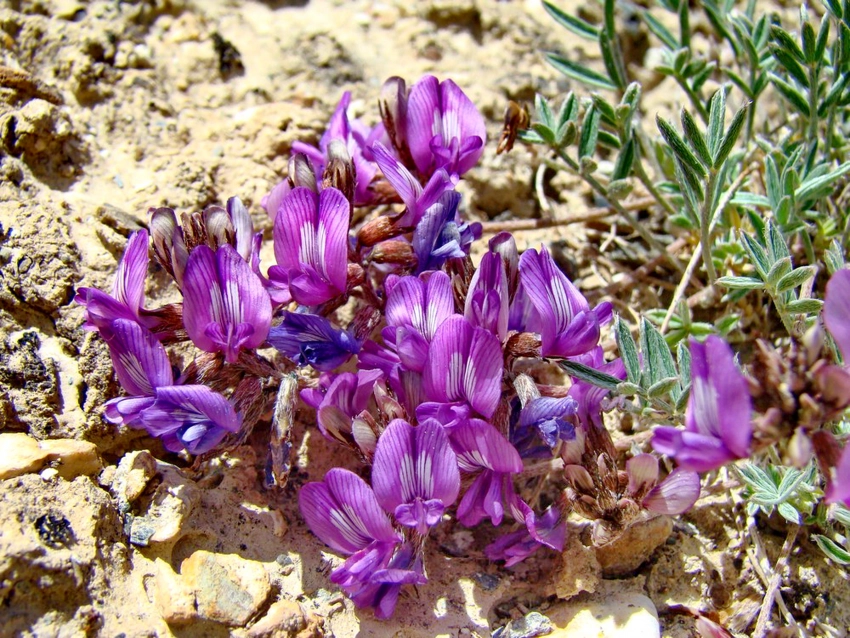KGZ32: Key Biodiversity Area Western Issyk-Kul

Square: 50 000 hectare
Category of KBA: В1, D1
Species that initiated the allocation of KBA [and other globally threatened species that are present in the KBA but have not been confirmed to meet the global criteria for KBA]: Netta rufina, Chesneya villosa, [Gavia arctica], [Vanellus gregarious], [Aythya ferina].
Availability of protected areas: (yes) In order to protect nature, the entire water area of Issyk-Kul and a three-kilometer strip of coast around the lake, as well as the Aksu and Jety-Oguz gorges, have been declared a reserve.
Species that initiated the isolation of KBA: Red-nosed pochard, Shaggy Chezneya, Black-throated diver, Gyrfalcon, Red-headed pochard.
Settlements on the territory of the KBA: Kok-Moinok the first, Ak-Olen, Ottuk, Kara-Shaar, Kara-Talaa, Ak-Bulun, etc.
Description
Lake Issyk-Kul (Kyrgyz - Ysyk-Kol) is one of the most amazing places in Kyrgyzstan. Since ancient times, it has been famous for its inimitable, unique nature.
Issyk-Kul is the largest lake in our country, one of the 25 largest lakes in the world in terms of area and is in 7th place in the list of the deepest lakes. It is located in the north-eastern part of the republic between the ridges of the Northern Tien Shan: Kungei Ala-Too (Turk. - "Motley mountains facing the sun") and Terskey Ala-Too (Turk. - "Motley mountains turned from the sun") on altitude 1609 m above sea level. The length of the water area of Lake Issyk-Kul from west to east is 182 km, and from south to north - 58 km.
The mountainous frame of Issyk-Kul turns in the west into a narrow Boom gorge, through which the Chu River flows. Only 6 km does not reach Issyk-Kul Chu, but it is connected to it by the Kutemaldy canal, through which they sometimes discharge water during a flood.
The Western Issyk-Kul region is considered one of the most arid regions in Kyrgyzstan. Precipitation is minimal - only 110 mm per year. One reason for this is the wind rose. Air masses (wind "Ulan") drive clouds to the east. Rains are rare, snow almost never falls. In the western mountains that border the lake, only 115 mm of precipitation falls. Therefore, the vegetation in the west of Issyk-Kul is rather scarce.
When leaving the Boom Gorge, a rather monotonous picture opens up into the basin: the blue waters of the lake are bordered by a narrow strip of meadows, behind which a waterless, gravel-stony desert stretches in all directions.
Rare sagebrush-saltwort-fescue vegetation is barely noticeable, only tall and powerful bushes of chia (sandy oats) stand out in sharp contrast against the lifeless background of the desert. The widely branched, deep root system of chia allows it to draw nutrients and moisture from poor gravel soils and even from shifting sands. On rocky areas grow thorny shrub caragana (chingil) and ephedra. Only near the exit of mountain valleys on alluvial fans moistened by streams, meadows, and sometimes crops, turn green.
The leaves of some plants have a shiny surface that better reflects the withering rays of the sun. Others have hard leaves in the form of needles, which also protects the plants from increased evaporation.
Many desert plants (snakeheads, wormwood, ziziphora and others) protect themselves from excessive evaporation of moisture by releasing essential oils.
In those parts of the deserts where most of the precipitation falls in the spring, "plants that run away from the drought" - ephemera - develop. All of them differ in insignificant size (2-8 cm). Their root system is concentrated in the upper soil layer, in which there is an insignificant supply of moisture in spring. Using this reserve, they manage to go through the entire development cycle in 3-4 weeks and die off, leaving seeds that tolerate the hot period well.
In perennial spring plants (ephemeroids), the above-ground parts dry up and die off in summer, while the underground ones remain viable, continuing their development with the onset of the next wet period.
Some desert plants are very beautiful. An example is the drought-resistant Perovskiya, which adorns the shores of Issyk-Kul with its bright blue-violet flowers.
The western desert part of the basin is inhabited by typical representatives of the desert fauna: jumping jerboa, red-tailed and combed gerbils, eared hedgehog. The penetration of these species went from the territory of Kazakhstan along the valley of the river. Chu. Of the birds living here: saja bird, black-bellied sandgrouse, little owl, bearded partridge, nightjar, desert finch, stone sparrow, rock bunting, Indian and crested larks, steppe pipit, rock nuthatch, wheatears (dancer, common, bald, black redstart) . Of the reptiles, there are foot-and-mouth disease (fast, multi-colored, ocellated), muzzle. Of the amphibians, you can see the green toad.
Who lives in the coastal thickets of Issyk-Kul?
Voles are numerous in the foothills, here you can also meet the small Central Asian tolai hare and the gray hamster. The piedmont steppes are home to such bird species as the Wheatear, Black Redstart, Buchanan's Bunting and the Vulture Eagle.
On the coast, in dense thickets of sea buckthorn and reeds, pheasants live. A special unique microclimate is created in the wild thickets of sea buckthorn. At the same time, air humidity increases due to a decrease in moisture evaporation; in winter, snow accumulates in them, and at the same time, it melts much more slowly than in open areas. All this creates favorable conditions for the emergence of meadow grasses of a wide variety of animals.
In the strip of sea buckthorn and marsh thickets inhabit hawk and gray warbler, common lentil, Indian and thrush warbler, wagtail (masked yellow-headed, yellow), reed bunting, pheasant, common and great turtle doves, mustachioed tit, hawthorn, white tit, great tit, black thrush, shrikes (shrike, long-tailed), kestrel, long-eared owl, cuckoo, southern nightingale, goldfinch, starling, magpie, sparrowhawk, marsh harrier.
Of the amphibians, the Central Asian frog, listed in the Red Book of Kyrgyzstan, lives in Issyk-Kul. She lives in the floodplains of lowland and mountain rivers with a quiet course. An amphibian spends a significant part of its life on land.
Of the reptiles found here: water snake, patterned snake, nimble lizard. From mammals - forest and house mice, Kirghiz and narrow-skulled voles, fox, ermine, weasel, jackal, shrews (shrew, shrew), talai hare, muskrat.
The muskrat was released in Issyk-Kul in 1944. It quickly acclimatized and populated the Pokrovsky Bay, some other shallow bays and estuaries rich in vegetation.
In the non-freezing waters of Issyk-Kul, mainly in its western part, about 50 thousand different birds winter - red-nosed pochards, coots, teals and gray geese, as well as mute swans and whooper swans.
Ecological problems
Natural biocenoses in the Issyk-Kul region are very diverse. Human activity entails a violation of these biocenoses. The coastal zone, forests and pastures are most susceptible to change.
The coastal zone is part of the Issyk-Kul State Reserve, but observations have shown that the reserve regime in this area is not followed. The territory is used for boarding houses, rest houses, sheep camps, as a result, defective communities are formed, consisting of poisonous, weedy, non-eatable plants, which means that the natural vegetation is gradually degrading. The role of groundwater is great in the formation of coastal zone vegetation. So, sea buckthorn and reed grow only when they are close to each other. The depressed state of sea buckthorn and reed thickets is usually associated with cutting down shrubs and lowering the groundwater level.
Coastal ecosystems - living filter of Issyk-Kul
The purity of the air and water of Issyk-Kul is by no means a consequence of human activity, but the result of the "work" of wildlife.
Issyk-Kul is a drainless lake, so all the waters of the Issyk-Kul basin sooner or later fall into it. Pollution can enter the lake from fields (fertilizers, pesticides, herbicides, etc.), roads (fuel and lubricanting oils), settlements and farms (household waste, detergents, etc.).
Sea buckthorn thickets together with a narrow strip of swamps play an important role in the purification of the lake waters coming from the entire surface of the lake basin.
The population and authorities have a generally negative attitude towards swamps. Sea buckthorn thickets also seem to be something optional for them, moreover, it do not allow free access to the beach area. In the recent past, they formed an almost continuous strip along the northern, southeastern and eastern coasts. During the war, sea buckthorn thickets around the lake were cut down almost everywhere. They subsequently recovered. The width of the sea buckthorn chain in certain places was over two kilometers. Unfortunately, at present, the area of sea buckthorn thickets is only a few thousand hectares, and with this small amount, they are severely disturbed. During the sanatorium and agricultural development of the coastal zone of Lake Issyk-Kul, cutting, inexpedient uprooting and burning of sea buckthorn took place.
In the middle of the last century, almost all swamps were drained. Often the attack on bushes and swamps was justified by the need to expand arable land. As a result of dubious actions, a jump in pollution of coastal zones was obtained. Only the decline in agricultural production over the last decade and a half has reduced the pollution coming from the fields.
However, the natural water treatment system is again under threat - and more serious. Instead of the unique and diverse landscapes that the lake coast is so rich in, a monotonous standard “boarding house” landscape will appear everywhere. The bulldozer's knife will take down the wild thickets and everything will become a bare beach. Instead of natural ecosystems that ensure the purity of the environment, artificial ecosystems will appear that pollute and destroy it. We break the magnificent natural mechanism that provides us with the very possibility of existence.
How do coastal ecosystems "clean" the lake?
The presence of a living ring of thickets of reeds, sea buckthorn, barberry and other shrubs around the lake ensures the purification of the water entering it. First, the water enters the system of a small swamp, in which it passes the first stage of purification by aquatic plants and planktonic organisms. Further, the water, passing through the root systems of all the plants included in such communities, is additionally purified from most of the pollutants that managed to penetrate into it along the long journey from the glaciers to the coast. And, finally, before pouring into the lake, the water passes its last stage of purification - through the sand of the coast, where it is purified by threads of microscopic fungi and microorganisms living there. This barrier is difficult to overcome for most pollutants.










